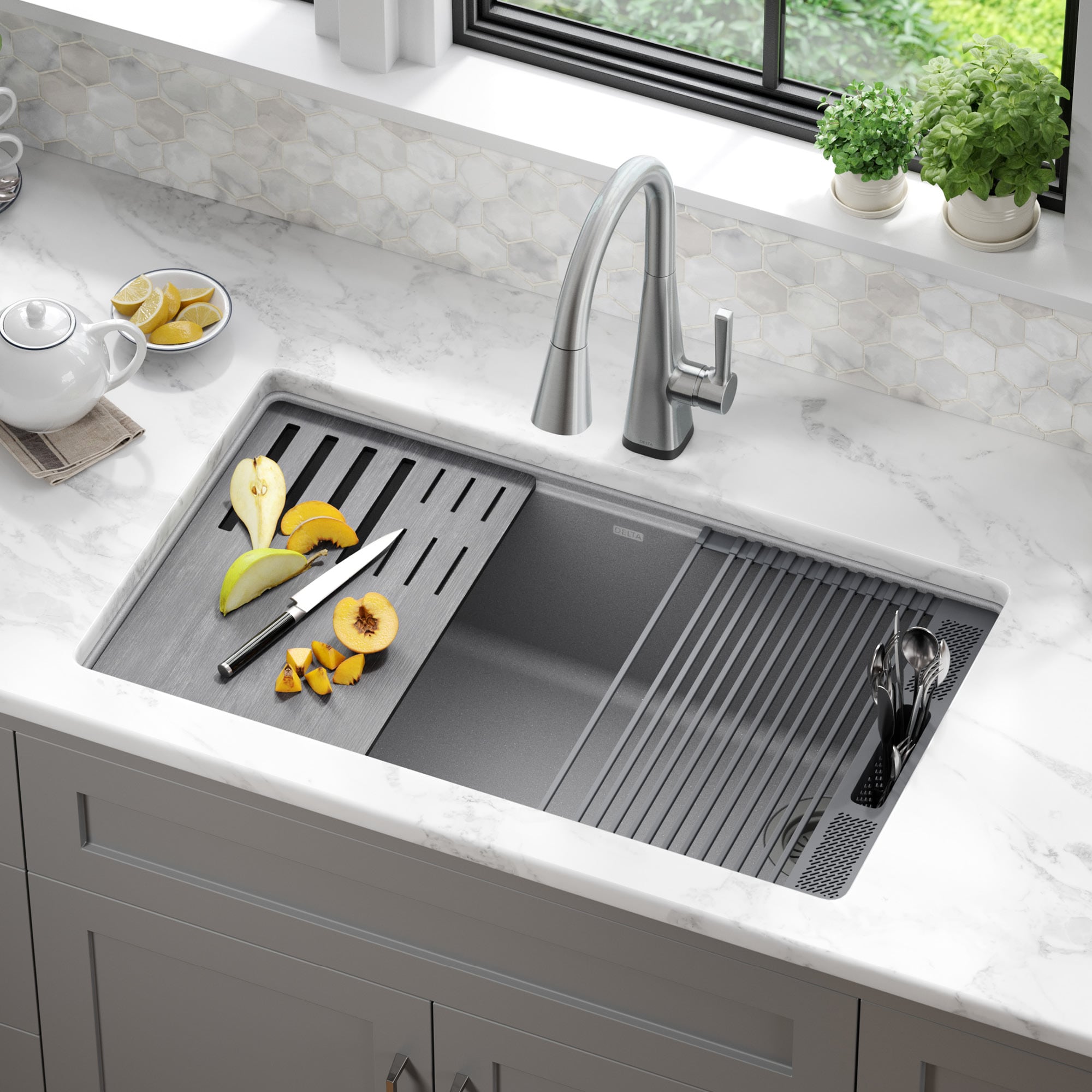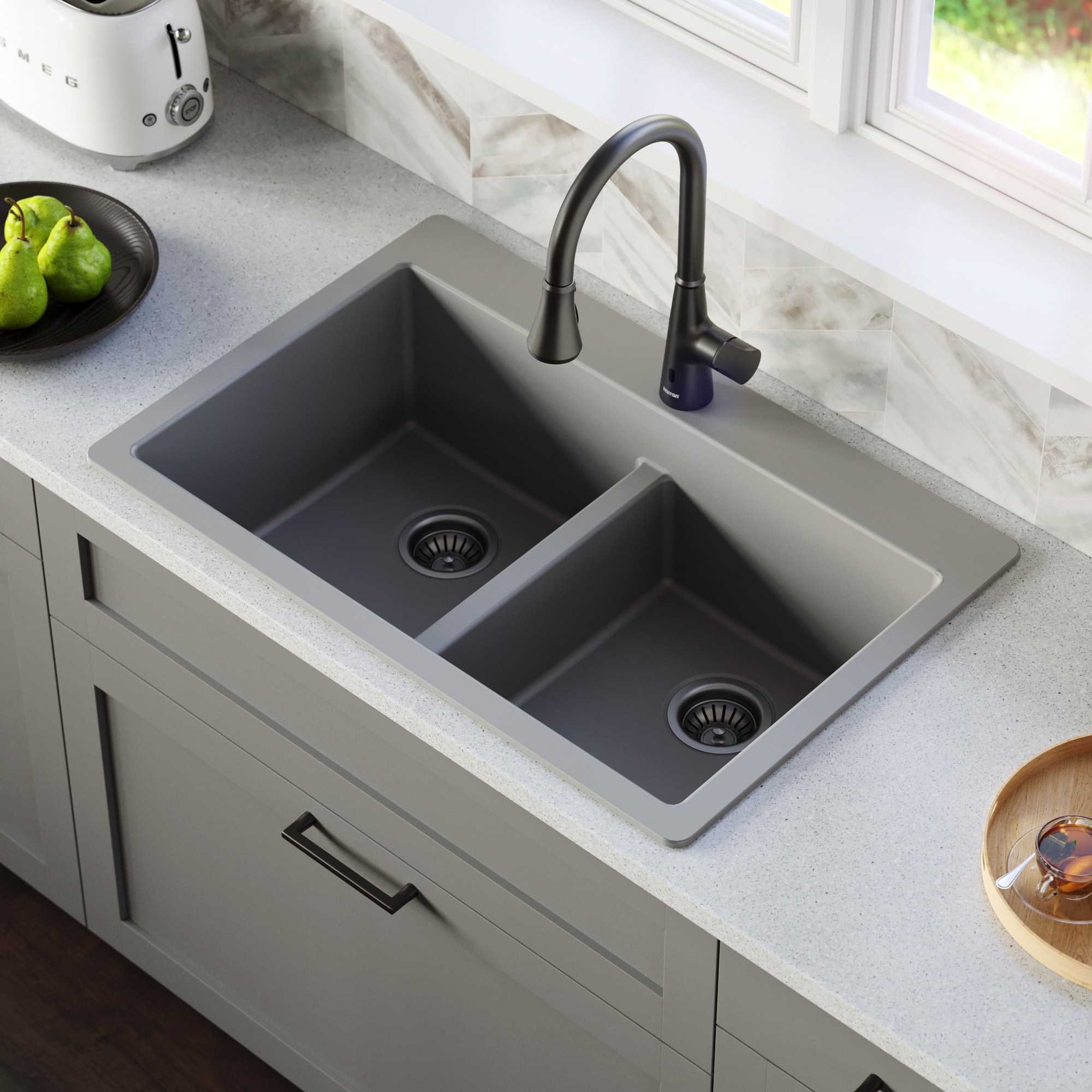Kitchen sink leaking can be a frustrating and inconvenient problem that requires immediate attention. Not only does it waste water, but it can also lead to further damage if ignored. Knowing how to repair a leaking kitchen sink can save you time and money, helping to prevent water damage and maintain the functionality of your kitchen. In this guide, we will provide a step-by-step process for diagnosing and repairing common causes of a leaking kitchen sink.
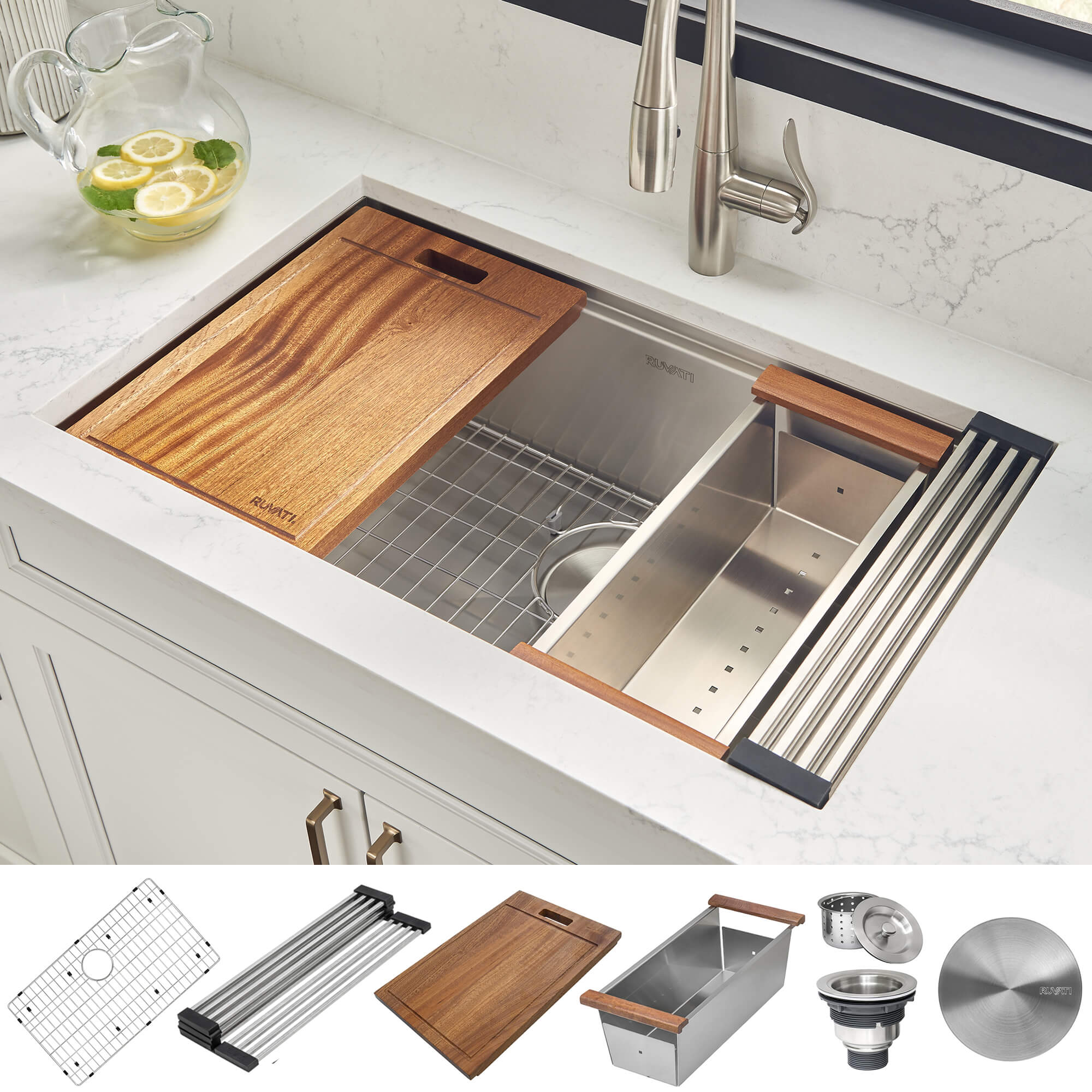
Identify the Source of the Leak:
Before attempting any repairs, identify the source of the leak. Common areas where leaks occur include the faucet, sink drain, P-trap, and supply lines. Consider the following steps to determine the source:
- Inspect the Faucet: Check for any visible water leaks around the base of the faucet, handles, or spout. Turn on the faucet and observe if water drips or sprays from any areas.
- Examine the Sink Drain: Place a bucket under the kitchen sink and inspect the drain for any leaks while running water through it. Check for water pooling or dripping around the drain pipes.
- Check the P-Trap: Examine the P-trap, the U-shaped section under the sink, for signs of leaking. Look for water stains or dampness around the connections.
- Inspect the Supply Lines: Examine the supply lines that connect to your faucet and see if there are any visible signs of leakage or dripping water.
Repairing a Faucet Leak:
If the leak originates from the faucet, there are several steps you can take to fix the issue. Consider the following techniques:
- Tighten Loose Connections: Use an adjustable wrench to tighten any loose connections, such as the connections between the faucet and the countertop or the handles.
- Replace Faulty Parts: If tightening the connections does not resolve the leak, inspect the faucet cartridge, O-rings, or washers for signs of wear or damage. Replace these parts as needed using a manufacturer-approved replacement kit.
Fixing a Sink Drain Leak:
If the leak is coming from the sink drain, consider the following repair methods:
- Tighten Connections: Use a pipe wrench to tighten any loose connections, including the slip nuts and compression fittings. Ensure you don’t overtighten, as it may lead to further damage.
- Replace Gaskets or Seals: If the leak persists, replace worn-out or damaged gaskets or seals. Disassemble the drain pipes and replace the faulty components with new ones.
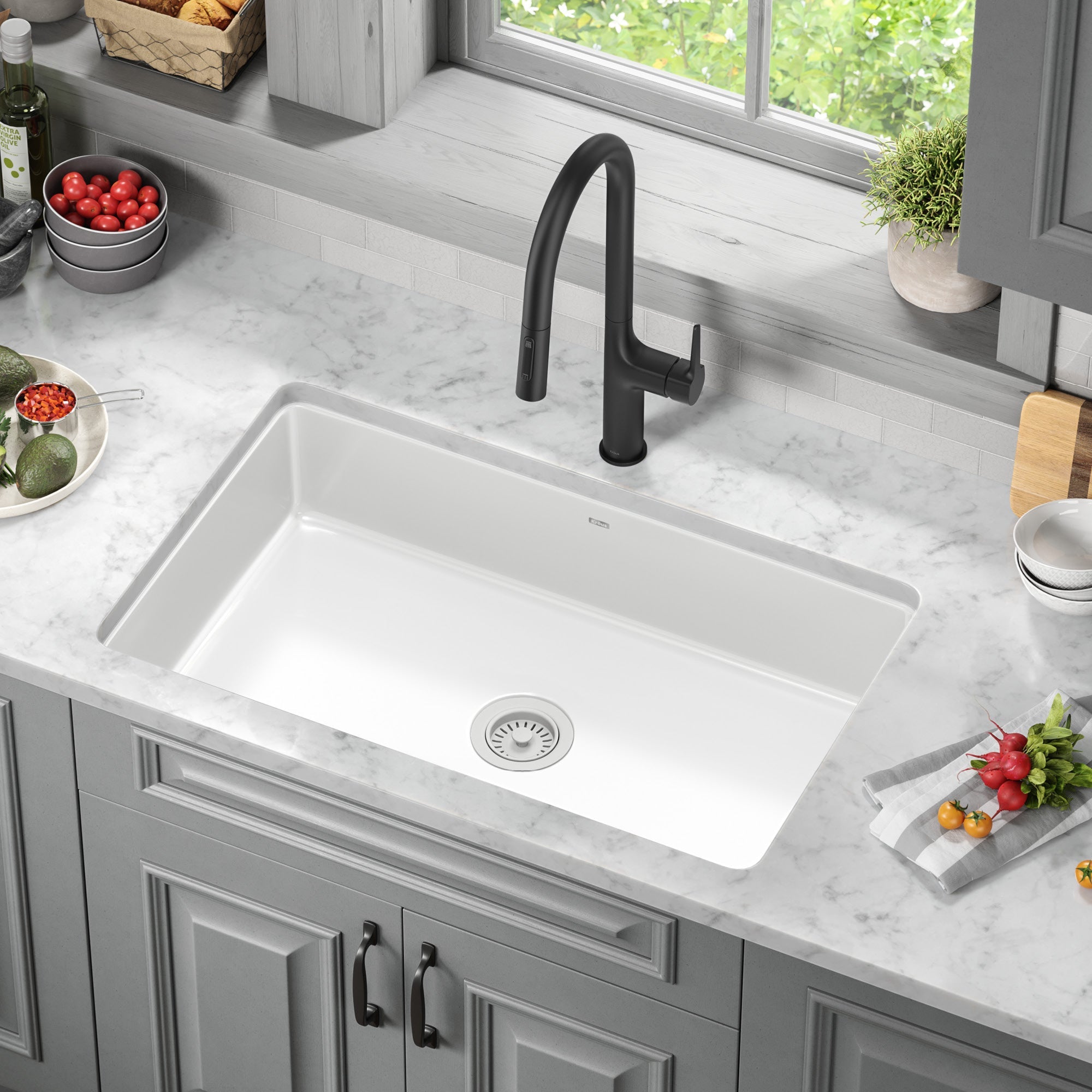
Repairing P-Trap Leaks:
A leaking P-trap can often be repaired by following these steps:
- Loosen Connections: Use a wrench to loosen the slip nuts on each side of the P-trap. Remove the trap carefully and empty any water into a bucket.
- Replace Gaskets: Inspect the gaskets or seals on both ends of the P-trap. If they are worn or damaged, replace them with new ones. Apply plumber’s tape or pipe joint compound to ensure a watertight seal.
- Reassemble and Tighten: Reattach the P-trap, ensuring it is correctly aligned, and tighten the slip nuts securely. Avoid overtightening to prevent damage to the threads.
Dealing with Supply Line Leaks:
If the supply lines are the source of the leak, consider the following steps:
- Turn Off Water Supply: Locate the shut-off valves under the kitchen sink drain and turn them clockwise to stop the water flow.
- Check Connections: Inspect the connections between the supply lines and the shut-off valves as well as the faucet. Tighten any loose connections using an adjustable wrench, taking care not to overtighten.
- Replace Damaged Supply Lines: If the supply lines are old or damaged, it is advisable to replace them. Measure the length and type of the existing lines to ensure you purchase the correct replacements. Follow manufacturer instructions for installation.
Final Checks:
After completing the repairs, perform the following checks to ensure the leak has been resolved:
- Turn on the water supply and observe the repaired areas to verify there are no leaks or drips.
- Check for any signs of water pooling, drips, or moisture around the repaired components.
- Clean up any spillage and ensure the area under the sink is dry before storing any items.
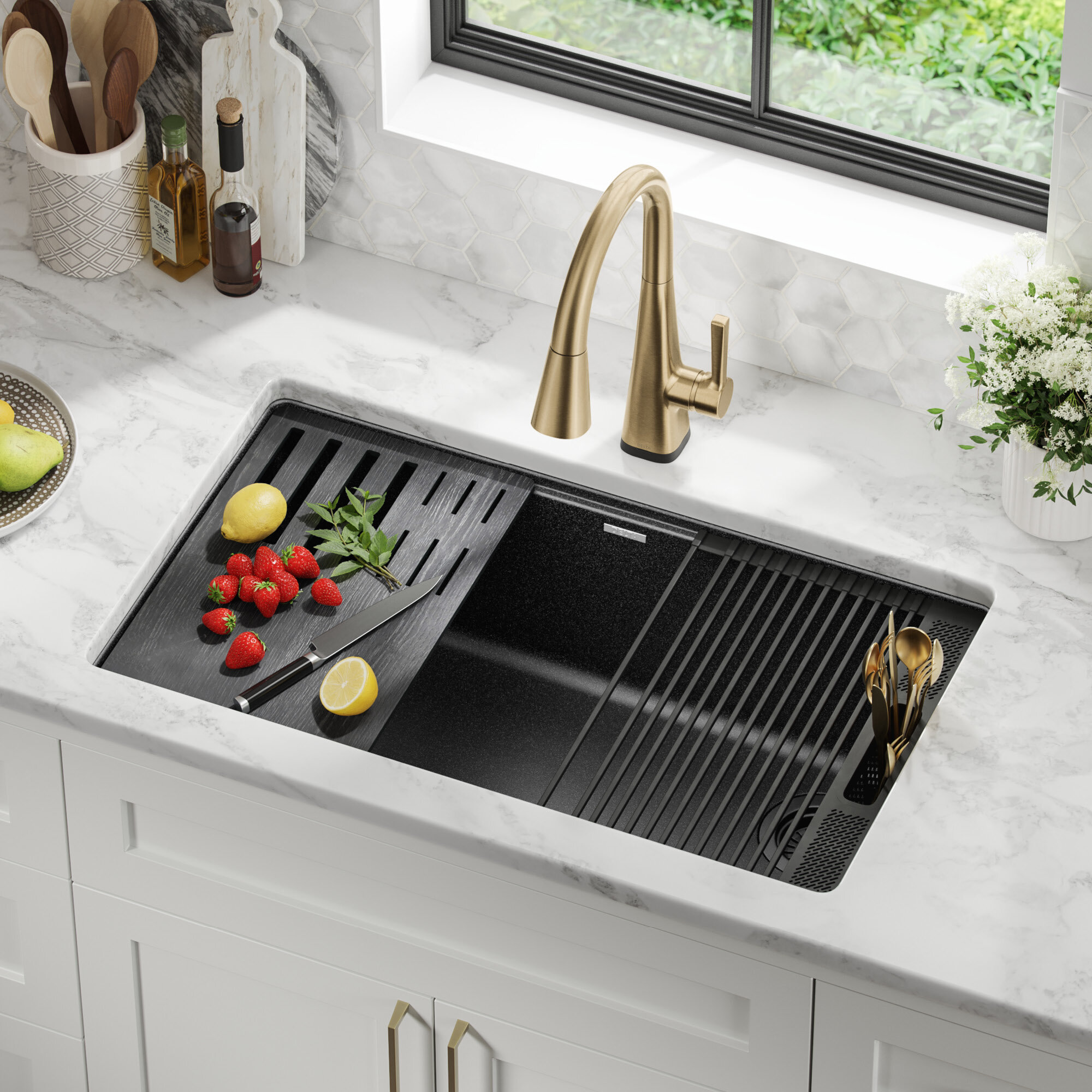
What are the styles of kitchen sinks?
The kitchen sink plays an essential role in daily activities such as food preparation, washing dishes, and general cleaning. Sinks serve both functional and aesthetic purposes, and there are various styles available to suit different kitchen designs and personal preferences. From classic to modern, understanding the different styles of kitchen sinks can help you choose the perfect option for your kitchen.
Undermount Sinks:
Undermount sinks are installed beneath the countertop, creating a seamless and sleek look. Consider the following types of undermount sinks:
- Stainless Steel: Stainless steel undermount sinks are a popular choice due to their durability, resistance to stains and scratches, and ease of maintenance. They offer a contemporary look that complements various kitchen styles.
- Granite Composite: Granite composite types of sinks combine durability and style. These sinks are made from a mixture of granite or quartz with resin, offering resistance to heat, stains, and scratches. They are available in various colors and textures.
Top Mount Sinks:
Top mount sinks, also known as drop-in sinks, are inserted into a hole cut into the countertop, with the edges of the sink resting on the countertop surface. Consider the following options:
- Porcelain: Porcelain or ceramic top mount sinks provide a classic and timeless look. They are available in different shapes, sizes, and colors, and are known for their durability and resistance to stains and impacts.
- Cast Iron: Cast iron top mount sinks are coated with enamel, providing a durable and glossy finish. They offer a classic appearance and are typically available in white or other enamel colors. Cast iron sinks are sturdy and resistant to chipping and scratching.
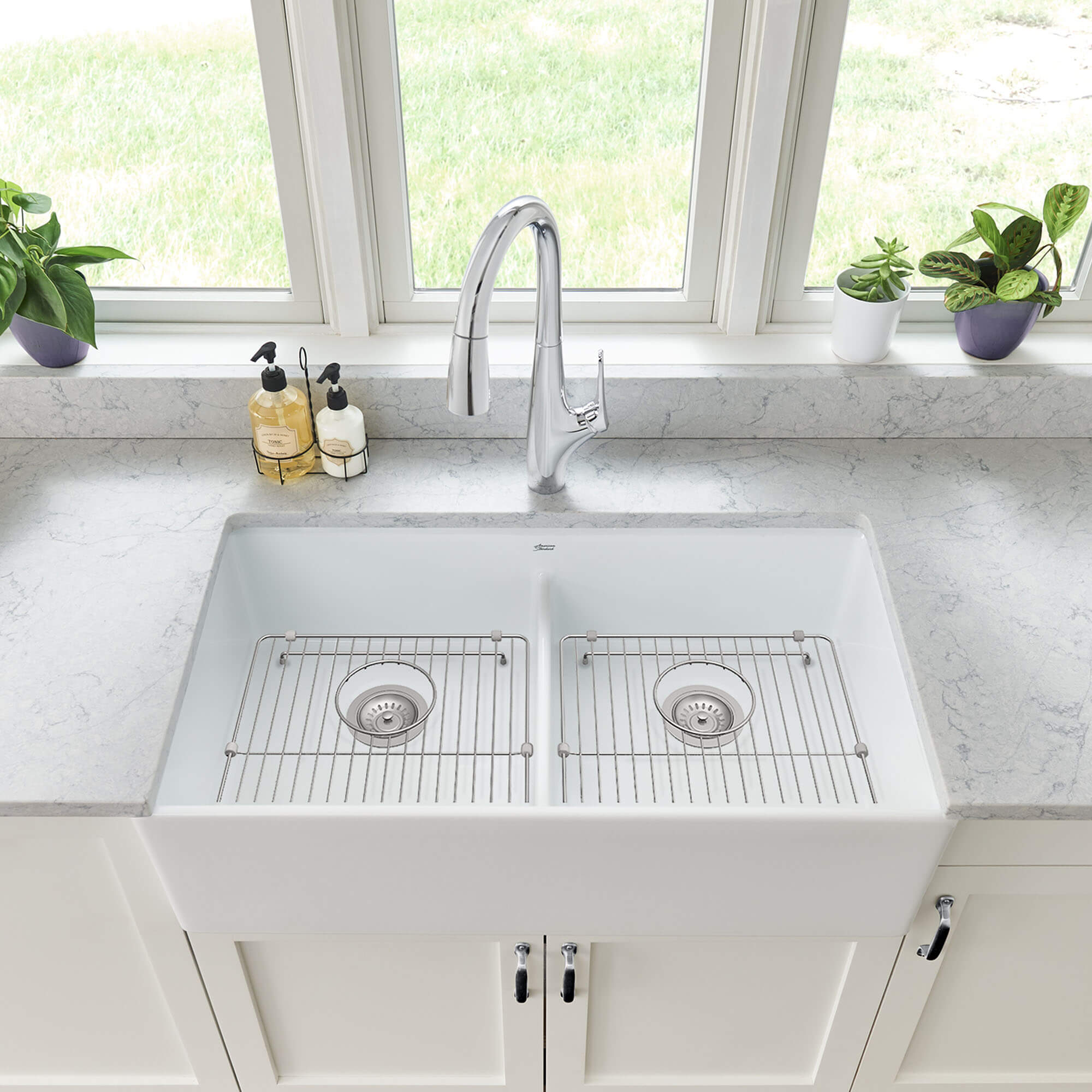
Farmhouse Sinks:
Farmhouse sinks, also known as apron sinks, have a prominent front-facing panel that extends slightly beyond the front of the cabinets. These sinks evoke a charming and rustic aesthetic. Consider the following options:
- Fireclay: Fireclay farmhouse sinks are made from clay fired at high temperatures, resulting in a hard and durable material. They offer a timeless and elegant look that complements various kitchen styles. Fireclay sinks are resistant to stains, heat, and scratches.
- Stainless Steel: Stainless steel farmhouse sinks have gained popularity due to their durability, versatility, and modern appearance. They are easy to maintain, resist corrosion, and are available in various sizes and configurations.
Single Bowl Sinks:
Single bowl sinks consist of a single basin, making them a practical choice for those who prefer a larger space to accommodate large pots and pans. Consider the following options:
- Stainless Steel: Stainless steel single bowl sinks provide a clean and contemporary look. They are durable, hygienic, and resistant to stains and corrosion. Stainless steel sinks offer flexibility in terms of size and configuration.
- Composite: Composite single bowl sinks are made from a combination of materials such as granite or quartz with resin. They offer a durable and heat-resistant surface and are available in a variety of colors and textures.
Conclusion:
Repairing a leaking kitchen sink is a task that requires attention to detail and a systematic approach. By identifying the source of the leak and following the appropriate repair techniques, you can fix common causes of leaks such as faucets, sink drains, P-traps, and supply lines. Performing regular maintenance and addressing leaks promptly can help prevent further damage and ensure the long-term functionality of your kitchen sink.
